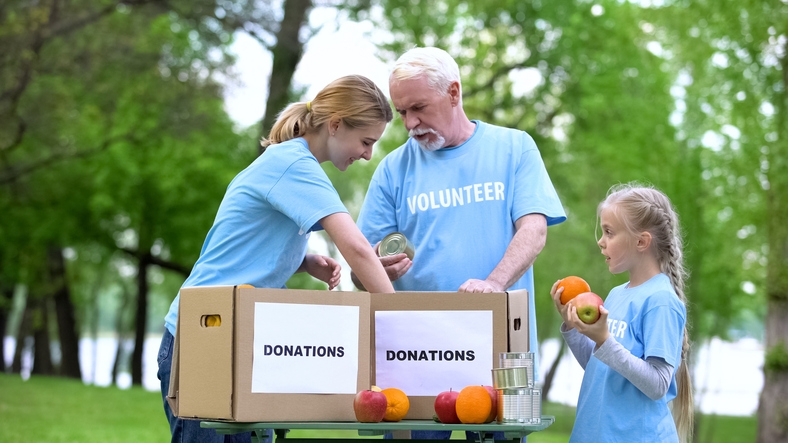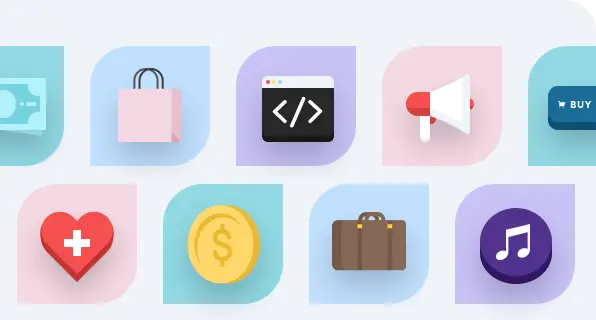Spark Generosity: A Creative Charity Event Marketing Plan with 8 Unique Ideas
Optimize your volunteer efforts with our essential guide. Learn practical tips and strategies to enhance your logistics for successful events. Read more!
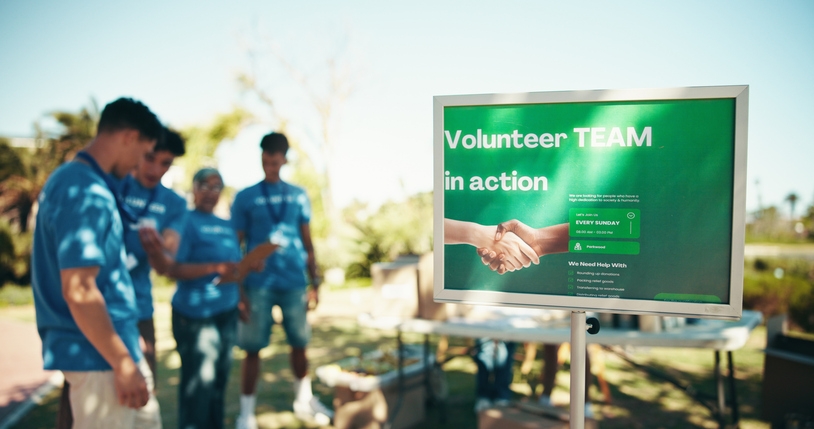
Introduction:
Charity events thrive not only on passion and purpose but also on powerful promotion. Whether you’re hosting a gala dinner, a school fundraiser, or a walkathon, your event's success hinges on how well you market it. In a saturated nonprofit landscape, even the most noble causes can go unnoticed without the right strategy.
This guide gives you a creative, step-by-step charity event marketing plan to drive awareness, attendance, and ultimately, donations. From out-of-the-box ideas to practical execution tips, let’s break down everything you need to market your event like a pro.
I. Set Clear Goals to Guide Your Fundraising Event Strategy
Every successful nonprofit event—whether it’s a gala dinner, a peer-to-peer fundraiser, or a hybrid virtual event—starts with clearly defined, measurable goals. But vague aims like “raise awareness” or “get people to attend” aren’t enough. You need fundraising goals that are trackable, targeted, and tied to your nonprofit's mission.
1. How to Use SMART Goals in Nonprofit Event Planning
SMART goals serve as the compass for your entire marketing strategy:
- Specific – What do you want to achieve exactly? (e.g., "Raise ₹500,000 to fund 100 student scholarships")
- Measurable – Can you track progress with concrete numbers? (e.g., registrations, donations, social shares)
- Achievable – Are your goals realistic given your budget, event team, and event format?
- Relevant – Do these goals support your broader nonprofit's mission?
- Time-bound – What is your exact timeline for achieving them?
2. Align Goals with Your Event Team and Trackable Milestones:
- Break big goals into tiered benchmarks (e.g., 25% of goal reached = launch new social proof campaign)
- Align each goal with specific team owners (e.g., email conversions tracked by the digital lead, sponsorships by board members)
3. Helpful Tools to Manage Goals and Track Progress:
- Google Sheets or Airtable: Use templates for tracking donations, registrations, and campaign reach
- Google Analytics + Meta Pixel: Measure web traffic from marketing channels
- Event management software (like Azavista): Set and track milestones within the platform
- KPI dashboards using Notion or Databox

II. Know Your Audience to Personalize Every Marketing Touchpoint
Nonprofit event planning is not about broadcasting one message to everyone. It's about targeting different audiences with tailored marketing efforts that speak to their motivations and behavior.
1. Key Donor Segments to Target for Your Next Fundraising Event
Past Donors – Already aligned with your mission. Offer deeper engagement and show progress from previous fundraising efforts.
- What they care about: Impact reports, transparency, donor recognition
- Best channels: Email campaigns, direct mail, LinkedIn
Local Community Members – Perfect for in-person events or hybrid events
- What they care about: Community building, visibility, family-friendly experiences
- Best channels: Posters, WhatsApp groups, local press, community bulletin boards.2. Corporate Sponsors – Interested in visibility and alignment with charitable organizations
- What they care about: Brand exposure, corporate social responsibility (CSR), tax benefits
- Best channels: Personalized pitches, sponsorship packages, event decks
Media & Influencers – Essential for awareness and extending reach
- What they care about: Fresh angles, human-interest stories, social proof
- Best channels: Press releases, Instagram reels, influencer kits
Volunteers & Advocates – Passionate and eager to spread the word
- What they care about: Sense of purpose, clear roles, appreciation
- Best channels: Volunteer platforms, Facebook Groups, SMS updates
2. How to Craft Messages that Resonate with Donors, Volunteers, and Corporate Sponsors:
- Use Miro or Canva to map out audience personas: include their pain points, favorite communication channels, and call-to-action triggers.
- Build segmented email lists and match each to a tailored messaging funnel.
- Craft marketing materials (posters, brochures, emails) with tone and visuals aligned to each segment.
- Create unique event registration landing pages for volunteers, donors, and sponsors with personalized messaging and CTAs.
3. Resources to Build Donor Personas and Target Effectively:
- CRM (e.g., HubSpot, Zoho, or Bloomerang) to manage audience segments and track past events engagement
- Email marketing tools (e.g., Mailchimp, Brevo) for smart segmentation and automation
- Survey tools (Typeform, Google Forms) for pre-event interest gathering or post-event feedback
- Event management platform to assign access and messaging workflows to different audience types
Understanding your audience means you can allocate your marketing budget and team efforts more effectively—leading to a more successful nonprofit event, deeper engagement, and stronger long-term relationships for future events.
III. Unique Charity Event Marketing Ideas That Drive Action
In the noisy digital world, your charity event needs more than posters and press releases. These fresh, high-engagement ideas help nonprofit organizations stand out, deepen donor loyalty, raise more money, and drive actual participation in your upcoming event — whether virtual, hybrid, or in person.
Let’s go beyond the basics.
1. Build Hype with a Virtual Countdown Wall Before Event Day
Goal: Build anticipation and daily engagement before event day.
What It Is:
A daily digital countdown shared across your event registration page, social media, and email newsletters. But instead of a plain number countdown, make it interactive.
Execution Tips:
- Create a daily “unlock” moment: e.g.,
- Day 7: “Meet our keynote speaker”
- Day 4: “Donor spotlight – Meet Rajesh, a 12-year-old impacted by your generosity”
- Day 1: “Surprise auction item reveal”
- Use Instagram Story highlights to preserve the countdown for latecomers
- Add the countdown widget to your homepage and event microsite
Resources Needed:
- Elfsight or Wix countdown widget
- Canva Story templates to make visual content
- Google Drive or Notion to pre-schedule reveals
- Involve key team members to manage daily uploads
Pro Tip: Ask event attendees to “vote” via Stories on what tomorrow’s reveal should be — this fuels engagement and spreads the word via polls.
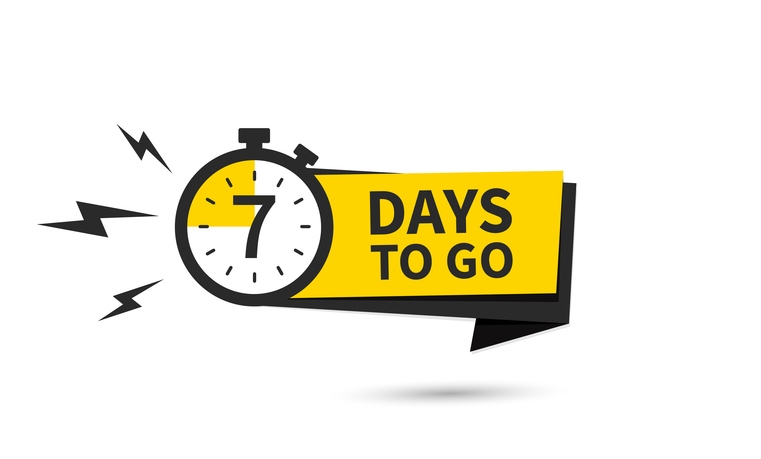
2. Let Attendees Lead: Peer Fundraising Challenges for Deeper Engagement
Goal: Turn your attendees into active fundraisers.
What It Is:
A peer-to-peer fundraising initiative where participants create mini goals under your campaign umbrella — e.g., "If I raise ₹10,000, I’ll wear a silly costume on event day."
Execution Tips:
- Launch a branded landing page using JustGiving, Donorbox, or Givebutter
- Offer a “Fundraising Toolkit” that includes:
- Sample captions
- Pre-designed Instagram/Facebook posts
- Digital achievement badges
- Encourage workplace teams, school groups, or local clubs to “compete” with each other (gamification angle)
Resources Needed:
- Peer-to-peer platform
- Volunteer or event team member to approve/monitor submissions
- Canva templates for fundraising graphics
- Marketing materials to promote through email, SMS, and influencers
Pro Tip: Let each fundraiser write “Why I’m raising money” in their own voice. Stories are more powerful than numbers in the nonprofit sector.
3. Make Giving Visual: Use a Live Donation Thermometer to Boost Momentum
Goal: Make progress visible and exciting in real time.
What It Is:
A visual fundraising tracker that updates publicly, showing donors how close the organization is to its fundraising goals.
Execution Tips:
- Add dynamic updates on your event registration page, home page, and during the in-person event on large screens
- Make milestone thresholds meaningful:
- 25% raised = Unlock behind-the-scenes video
- 50% = Surprise guest reveal
- 75% = In-kind donation match by corporate sponsor
- Post updates on social media channels with donor shoutouts
Resources Needed:
- EmbedSocial or Raisely fundraising thermometer widget
- Graphic designer or Canva/Figma user
- Event management software that integrates live donation tracking
- Key team members to assign reward drops
Pro Tip: If your event is hybrid, use a split thermometer: one for digital donations and one for in-person contributions to compare.
4. Share Real Stories: Launch a “Why I Give” Social Media Series
Goal: Humanize your fundraising event through real voices.
What It Is:
A 2-week video or graphic campaign spotlighting donors, volunteers, and beneficiaries, talking about why they’re involved in your nonprofit’s mission.
Execution Tips:
- Use mobile-friendly video tools to film short 30–60 second clips
- Ask a set of consistent, emotional questions:
- “What does giving mean to you?”
- “How has this organization impacted your life?”
- Share across multiple communication channels:
- Instagram Reels
- LinkedIn videos (for professional credibility)
- WhatsApp status shares for localized reach
Resources Needed:
- Basic smartphone camera + clip mic
- Free editing apps like CapCut or InShot
- Consent forms (especially for minors/beneficiaries)
- Hashtag strategy (e.g., #WhyIGive + event hashtag)
Pro Tip: Make it a “challenge” and ask others to post their own #WhyIGive story and tag three friends.
5. Expand Your Reach with Local Influencers and Corporate Sponsors
Goal: Reach new donor pools at low cost.
What It Is:
Instead of splurging on one celebrity, activate 5–10 micro-influencers (1k–10k followers) who align with your cause.
Execution Tips:
- Search on platforms like Collabstr or Heepsy
- Target by interest niche — e.g., education, animal welfare, sustainability
- Offer them:
- Free event access
- Shoutouts on your page
- Small in-kind gifts or charitable donation in their name
- Prep a Brand Kit that includes:
- Visual guidelines
- Suggested captions
- Event day hashtags
- Logo usage do’s and don’ts
Resources Needed:
- Influencer discovery platform
- Outreach emails with a clear CTA
- Brand kit + contract template (even for pro bono)
- Event team lead to coordinate schedules or appearances
Pro Tip: Ask influencers to “go live” during your event for real-time engagement.
6. Launch a “Double Your Impact” Donation Drive with Matching Gifts
Goal: Boost urgency and maximize donations through time-limited matching.
What It Is: Create a limited-time campaign—usually 24 or 48 hours—where donations are matched by a corporate sponsor or major donor. This strategy is highly effective for virtual events, mid-campaign refreshes, or your final donation push.
Execution Tips:
- Promote the campaign across multiple communication channels like:
- Email campaigns: Use countdown timers and testimonials from previous successful events
- SMS campaigns: “6 hours left to double your gift. Help us hit ₹5L before midnight!”
- Event attendees and volunteers: Encourage them to re-share real-time progress
- Tease the campaign early, then make a loud launch across all marketing channels
- Share event metrics in real time (e.g., how many donors doubled their gift)
Resources Needed:
- Matching agreement or signed commitment from a corporate sponsor or major donor
- Email platforms like Mailchimp or ActiveCampaign with visual timers
- SMS tools like Twilio, SimpleTexting, or Superfone
- Event management platform to embed real-time donation trackers
Pro Tip: Combine this with a donation thermometer and a compelling story (“Every ₹500 helps fund a child's meals for a month”) to drive conversions.
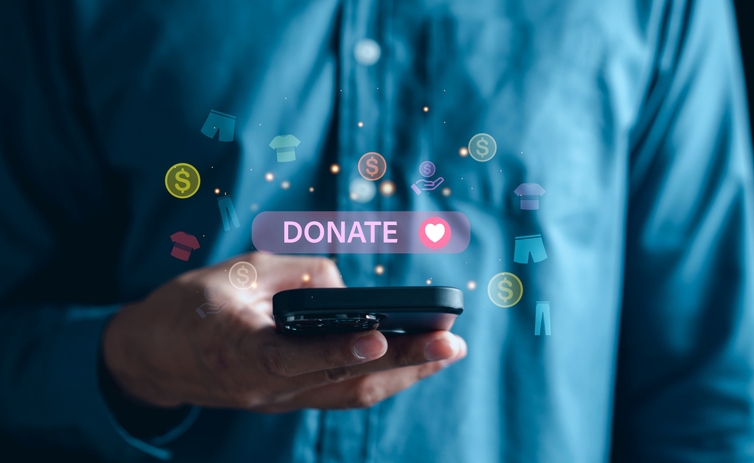
7. Create Branded Digital Swag Your Supporters Will Want to Share
Goal: Turn your supporters into brand ambassadors and amplify reach.
What It Is: Give your donors and event attendees customized, shareable digital swag—from social media frames to profile stickers and email signatures.
Execution Tips:
- Offer digital badges like:
- “Proud Donor”
- “Charity Champion”
- “I Funded a Smile!”
- Add share buttons on your event registration page to let donors share their badge with a thank-you message
- Create Facebook profile picture frames, LinkedIn banner templates, or Zoom backgrounds branded for your nonprofit event
Resources Needed:
- Canva Pro or Adobe Express for graphics
- A custom landing page or Linktree to host and distribute digital swag
- Marketing materials with instructions for how to use/share them
Pro Tip: Turn it into a social contest—“Best Donor Badge Photo Wins Free VIP Access to the Next Event.”
8. Host Pop-Up Preview Events to Build Local Awareness and Early Event Registration
Goal: Raise awareness, engage local communities, and pre-promote your upcoming event.
What It Is: Short, localized preview events that build momentum leading up to the main fundraising event. These can happen at schools, malls, cafés, coworking spaces, or partner venues.
Execution Tips:
- Partner with local businesses (bakeries, bookstores, gyms) to co-host
- Create an Event-in-a-Box: includes table signage, branded handouts, QR code posters, and small giveaways
- Ideas for activities:
- Free henna tattoos or face painting for kids
- Acoustic artist or spoken word session
- “Spin the wheel” game for small prizes in exchange for QR code donations
- Collect names for event registration or volunteer sign-up directly onsite
Resources Needed:
- Portable signage, pull-up banners, and branded merchandise
- QR code generators, onsite check-in kiosks for instant donations or RSVP forms
- Volunteers or team leads trained for each location
- Event materials such as pamphlets, business cards, and fundraising goals display
Pro Tip: Collect email addresses during the pop-up and segment them for a warm-lead campaign later to promote your nonprofit's next event.
IV. Your Cross-Channel Marketing Timeline to Promote the Event Effectively
An effective marketing timeline aligns with your overall event planning process, helping you deploy marketing campaigns across the right platforms, at the right time, with the right message. Coordinating efforts across multiple channels not only increases visibility but also ensures you're recruiting volunteers, reaching new donors, and securing corporate sponsorships well before event day.
What to Launch 8 Weeks Before the Event: Branding, Event Format, and Website
- Finalize your branding elements, messaging tone, and event format (virtual, in-person, or hybrid)
- Build and publish your event page optimized for search engine results (include keywords tied to your cause)
- Start teaser content campaigns across social media (e.g., countdown graphics, teaser videos)
- Begin the design and production of promotional materials: banners, flyers, social graphics
6 Weeks Out: Email Campaigns, Direct Mail, and Influencer Outreach
- Launch your email marketing series—segment lists for past attendees, sponsors, and new leads
- Reach out to local press, nonprofit blogs, and community groups to secure free or low-cost coverage
- Activate micro-influencers and ambassadors for cross-promotional support
- If eligible, apply for and configure your Google Ad Grant to run PPC ads targeting key search terms
4 Weeks Out: Drive Event Registration and Build Buzz with Social Contests
- Send RSVP nudges to unconfirmed guests and offer limited-time perks (VIP access, shoutouts)
- Run social contests like: "Tag 3 friends for a chance to win exclusive merch!"
- Distribute flyers or posters through schools, local cafés, and partner organizations
- Start publishing spotlight features on beneficiaries or stories behind the cause
1 Week Before the Event: Paid Ads, SMS Pushes, and Event Team Rehearsals
- Launch your Google Display and Meta Ads (with retargeting audiences)
- Send SMS reminders and push final donation asks with urgency language (e.g., "24 hours left to double your gift!")
- Prep and rehearse your event team or MC for a smooth execution
- Confirm logistics for event volunteers, catering, speakers, or virtual hosts

Post-Event Follow-Up: Say Thank You and Sustain Momentum for the Next Campaign
- Publicly thank donors, volunteers, and sponsors on all marketing channels
- Share a professional event recap video and testimonials
- Reveal your final fundraising total—frame it as a shared win for the community
- Invite attendees to opt in for future updates or your next event announcements
- Post-event survey: capture feedback on what worked, how you can improve, and volunteer interest
Tools to Manage Your Campaign Across Channels (Email, Ads, Event Management Software)
- Google Calendar or Notion: to coordinate cross-functional timelines and track task ownership
- Meta Ads Manager + Google Ads (or Google Ad Grant): to drive traffic and conversions from search engine results
- Event management platform: Like Azavista, to track RSVPs, donations, and engagement metrics
- Canva or Adobe Express: to create consistent, on-brand promotional materials
V. Metrics That Show If Your Fundraising Event Worked
Tracking event performance isn’t just about reporting numbers—it’s about understanding what worked so you can improve the planning process for future events and ensure your organization raises funds more efficiently over time.
Track the Right Event Metrics: Registration, Donations, Engagement
- Email Metrics: Open rate, click-through rate, unsubscribe rate
- Social Media Metrics: Reach, shares, saves, engagement per post
- Donation Metrics:
- Conversion rate per campaign or donor segment
- Average gift size (by source: email, social, direct mail)
- Event Metrics:
- Total RSVPs vs. actual attendance
- Number of volunteers recruited
- Total funds raised (against initial goal)
- Cost per attendee or per dollar raised
Use These Tools to Monitor Conversions and Optimize Marketing (Google Analytics, Meta, Email, and CRM):
- Google Analytics + UTM tagging: Track how users move from your marketing campaigns to your donation or event page
- Meta Business Suite: Analyze performance of social ads and organic posts
- Email platforms: Brevo, Mailchimp, or ActiveCampaign reports
- CRM/Donor Platforms: Track lifetime value, frequency of donations, and giving trends
Pro Tip: Align your reporting cadence with your event planning process—do a weekly metrics pulse in the 8-week lead-up, daily checks in the final week, and a full post-mortem within 7 days after event day.
By using data to reflect, adjust, and scale your efforts, you’ll help your organization raise money more effectively and build a strong blueprint for your next event’s success.
VI. Final Thoughts: Market Your Fundraising Event Like Your Cause Depends On It
Hosting a successful charity event goes beyond inspirational speeches or beautiful venues. It's about building a marketing engine that drives awareness, action, and long-term connection. When you craft the right plan, you don't just promote a fundraiser — you rally a movement.
The strategies above will help you not only host events with higher turnout and donations, but also strengthen your ability to communicate your nonprofit’s mission and run your organization effectively in the long run.
Whether you're raising funds for education, healthcare, or social change, a thoughtful marketing strategy can amplify your message and elevate your event from ordinary to unforgettable. Most importantly, it positions your efforts as part of a larger story — one that shapes your organization's success far beyond a single day.
More Event Marketing and Promotion

